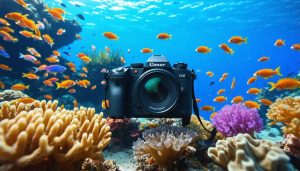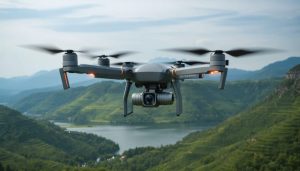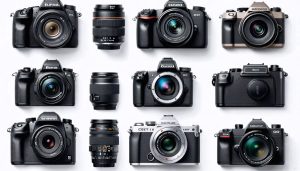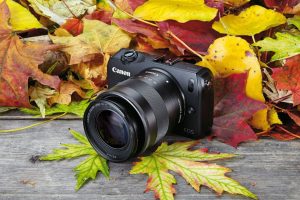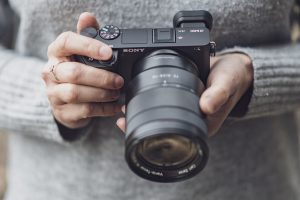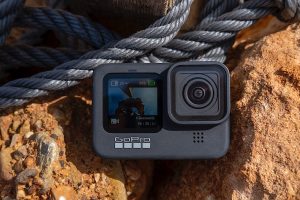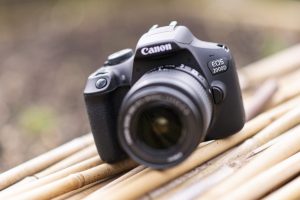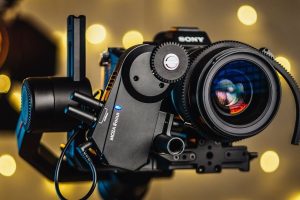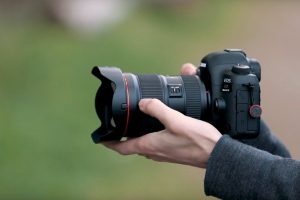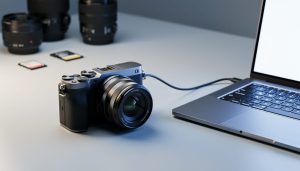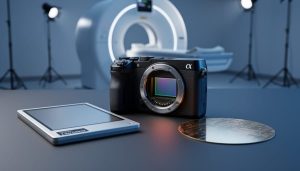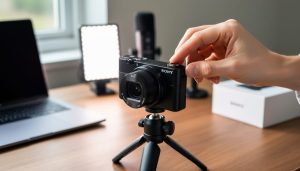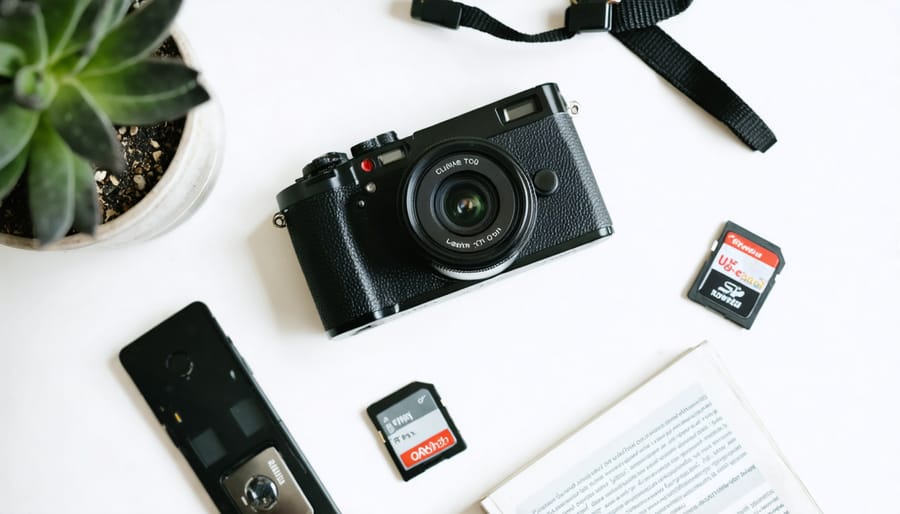
Skip the overwhelm of choosing your first camera and master photography with the right point-and-shoot. Today’s beginner-friendly cameras pack professional features into compact, easy-to-use bodies that won’t break the bank. While smartphones capture decent photos, a dedicated point-and-shoot camera delivers superior image quality, better low-light performance, and genuine optical zoom – essential tools for developing your photography skills. Whether you’re documenting family memories or exploring creative photography, this guide cuts through the technical jargon to reveal the best cameras that combine simplicity with powerful features. We’ve tested dozens of models to identify options that offer automatic modes for immediate success, manual controls for future growth, and proven reliability that supports your journey from complete novice to confident photographer. Let’s discover the perfect camera that matches your goals, budget, and learning style.
Why Choose a Point-and-Shoot Camera in 2024?
Better Image Quality Without the Learning Curve
Point-and-shoot cameras have come a long way in terms of image quality, rivaling some entry-level DSLRs without the complexity. Modern point-and-shoots pack larger sensors – typically 1-inch or Micro Four Thirds – that capture more light and detail than your smartphone. Think of these sensors as a bigger net catching more fish – they simply gather more visual information.
The lens quality in today’s point-and-shoots is equally impressive. Many feature Zeiss or Leica glass, names synonymous with optical excellence. These premium lenses deliver sharper images and better low-light performance without requiring you to understand complex camera settings. Colors appear more vibrant and true-to-life, while backgrounds have that pleasant blur that makes subjects pop.
Most importantly, advanced image processors do the heavy lifting behind the scenes. They automatically adjust settings like exposure, white balance, and focus, ensuring you get great shots in various conditions. Features like face detection and scene recognition mean you can concentrate on composition while the camera handles the technical details. It’s like having a professional photographer’s knowledge built right into your camera, working quietly in the background to help you capture stunning images.
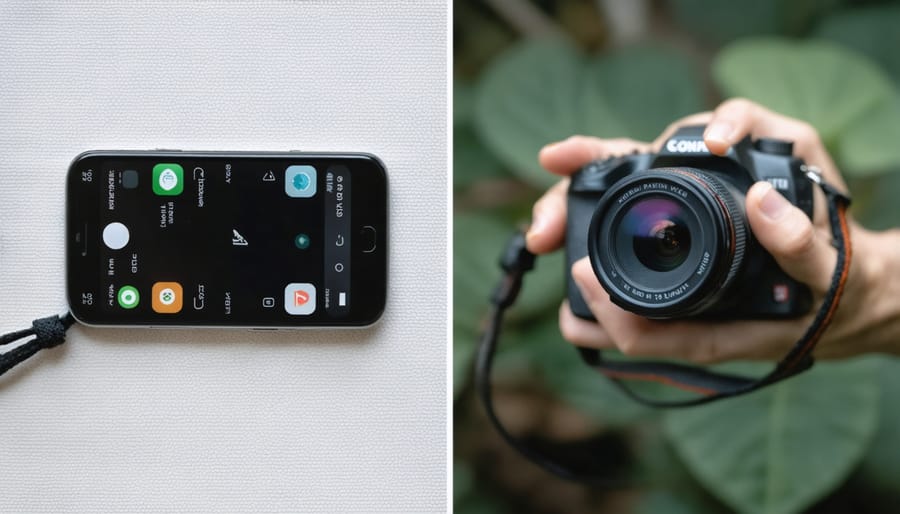
Features That Actually Help Beginners
When starting your photography journey, certain features can make a significant difference in your learning curve. Auto Scene Selection takes the guesswork out of choosing settings by automatically detecting whether you’re shooting landscapes, portraits, or night scenes. Face Detection ensures your subjects stay in focus, while Smart Portrait mode helps capture the perfect smile timing.
Built-in tutorials and shooting guides, found in many modern point-and-shoots, act like a personal photography coach. These on-screen tips explain basic concepts and suggest camera settings as you shoot. For those still learning composition, the Rule of Thirds grid overlay helps frame shots more effectively.
Image stabilization is particularly valuable for beginners, reducing blur from shaky hands. Auto ISO control adapts to changing light conditions, while Intelligent Auto mode combines multiple features to deliver consistently good results across various situations.
Look for cameras with a dedicated “Easy” or “Basic” mode that simplifies the interface and limits overwhelming options. Features like in-camera editing and filter effects let you experiment creatively without needing additional software, making the learning process more enjoyable and immediate.
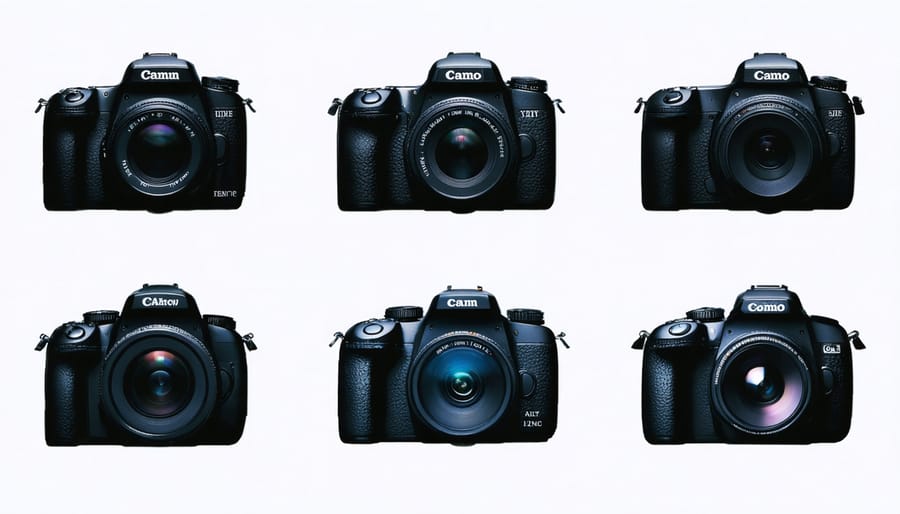
Our Top Point-and-Shoot Picks for Beginners
Best Overall: Sony RX100 VII
The Sony RX100 VII stands out as the perfect blend of portability and professional-grade features, making it our top recommendation for beginners who want room to grow. This premium compact camera packs a remarkable 20.1MP 1-inch sensor and a versatile 24-200mm equivalent zoom lens into a pocket-sized body that weighs just 302 grams.
What truly sets the RX100 VII apart is its exceptional autofocus system, inherited from Sony’s professional cameras. With 357 phase-detection points and real-time tracking, it keeps your subjects sharp whether you’re photographing fast-moving kids or wildlife. The camera’s 20fps continuous shooting capability ensures you never miss a crucial moment.
For beginners, the automatic modes deliver consistently beautiful results, while the intuitive menu system makes it easy to experiment with manual controls as your skills develop. The 3-inch tilting touchscreen is perfect for composing shots from creative angles, and the pop-up electronic viewfinder proves invaluable in bright sunlight.
Video capabilities are equally impressive, with 4K recording and slow-motion options that rival dedicated video cameras. The built-in image stabilization helps keep your footage smooth, even when shooting handheld.
While the $1,300 price tag might seem steep, the RX100 VII’s versatility and image quality justify the investment. It’s essentially a professional camera in a compact body, eliminating the need to upgrade as your photography skills advance. The only notable drawbacks are the somewhat limited battery life (260 shots per charge) and the learning curve associated with its advanced features.
For beginners seeking a camera that combines ease of use with professional capabilities, the RX100 VII represents the gold standard in point-and-shoot photography.
Best Budget Option: Canon PowerShot SX740
For budget-conscious photographers who want a capable point-and-shoot without breaking the bank, the Canon PowerShot SX740 offers impressive value. This compact camera packs a powerful 40x optical zoom lens into a pocket-friendly body, making it perfect for travelers and everyday photographers alike.
The standout feature is its versatile 24-960mm equivalent zoom range, allowing you to capture everything from wide landscape shots to detailed close-ups of distant subjects. Despite its affordable price point, the SX740 doesn’t skimp on modern features, offering 4K video recording, a flip-up LCD screen for selfies, and built-in Wi-Fi for easy photo sharing.
Image quality is surprisingly good for its price range, particularly in well-lit conditions. The 20.3-megapixel CMOS sensor produces sharp, vibrant photos with natural colors, though you might notice some noise in low-light situations. The camera’s Zoom Framing Assist feature helps keep distant subjects in frame, which is especially helpful for beginners still mastering composition.
Beginners will appreciate the intelligent automatic modes that take the guesswork out of photography, while more adventurous users can experiment with manual controls as their skills develop. The camera’s ergonomic design feels secure in hand, with logically placed buttons that are easy to navigate even for newcomers.
Battery life is solid, offering approximately 265 shots per charge, and the included USB charging capability means you can power up on the go. While it may lack some premium features like a touchscreen or RAW shooting capability, the PowerShot SX740 delivers exceptional value for beginners who want a reliable, feature-rich camera without a hefty investment.
Best for Learning: Panasonic Lumix ZS80
The Panasonic Lumix ZS80 stands out as an excellent learning companion for photography beginners, thanks to its intuitive interface and comprehensive feature set that grows with your skills. This compact camera strikes an ideal balance between accessibility and advanced capabilities, making it perfect for those who want to develop their photography expertise.
What makes the ZS80 particularly suitable for learning is its intelligent AUTO mode, which helps newcomers understand what settings work best in different situations. The camera displays helpful explanations on screen, teaching you why it’s choosing specific settings – essentially functioning as a built-in photography instructor.
The 3-inch tilting touchscreen is highly responsive and features a user-friendly menu system that’s easy to navigate. Combined with the high-resolution electronic viewfinder, it offers beginners two different ways to compose shots while learning about framing and composition. The screen can also tilt 180 degrees, making it perfect for learning self-portraiture and vlogging techniques.
With its 30x optical zoom range (24-720mm equivalent), the ZS80 lets newcomers experiment with everything from wide-angle landscapes to telephoto wildlife shots. The camera’s 4K photo modes are particularly educational, allowing users to capture 30 frames per second and select the best shot afterward – perfect for understanding timing and movement in photography.
Battery life is impressive at approximately 380 shots per charge, giving plenty of time for practice and experimentation. The camera also includes Wi-Fi connectivity for easy sharing and remote shooting, which helps in learning different shooting perspectives and techniques. For beginners looking to grow their skills, the Lumix ZS80 provides an excellent foundation with room to develop.
Most Durable: Olympus Tough TG-6
When it comes to durability, the Olympus Tough TG-6 stands in a league of its own. This rugged point-and-shoot camera is built to withstand just about anything a beginner photographer might throw at it – or accidentally drop it into. Waterproof up to 50 feet, crushproof to 220 pounds, and freezeproof down to 14°F, it’s the perfect companion for adventurous newcomers to photography.
Beyond its tough exterior, the TG-6 delivers impressive image quality with its 12MP sensor and bright f/2.0 lens. While the megapixel count might seem modest compared to other cameras, it’s optimized for excellent low-light performance and sharp, detailed images. The camera particularly excels in macro photography, featuring multiple close-up shooting modes that make it easy to capture stunning details of small subjects.
What makes the TG-6 especially appealing for beginners is its intuitive automatic modes combined with room for growth. The camera offers both point-and-shoot simplicity and manual controls for those ready to experiment. Its 4K video capabilities and built-in Wi-Fi make it a versatile tool for both still photography and video content creation.
The LCD screen, while not the largest at 3 inches, is clear and bright enough to use in sunny conditions. The camera’s grip is secure even when wet, and the buttons are large enough to operate with gloves on – practical features that many beginners will appreciate.
While it’s not the cheapest option in our lineup, the TG-6’s virtually indestructible nature makes it an excellent investment for beginners who want a camera that can survive their learning curve and outdoor adventures.
Key Features to Look For
Auto Modes That Actually Work
Modern point-and-shoot cameras come equipped with intelligent auto modes that take the guesswork out of photography while still delivering impressive results. Unlike the basic auto modes of the past, today’s smart features can recognize various scenes and subjects, automatically adjusting settings for optimal shots.
Scene Recognition modes can detect whether you’re shooting landscapes, portraits, or night scenes, then adjust parameters like aperture, shutter speed, and ISO accordingly. Face Detection ensures your subjects stay in focus, while Smile Detection waits for the perfect moment to capture genuine expressions.
Many current models also include intelligent stabilization systems that work in tandem with auto modes, helping you capture sharp images even in challenging lighting conditions. Advanced features like HDR (High Dynamic Range) automatically kick in when the camera detects high-contrast scenes, ensuring you don’t lose details in shadows or highlights.
These smart auto modes are particularly valuable for beginners because they serve as excellent learning tools. As you shoot, you can observe how the camera adapts to different situations, gradually building an understanding of photography basics without feeling overwhelmed by manual controls.
Connectivity and Sharing
In today’s connected world, the ability to quickly share your photos is almost as important as taking them. Modern point-and-shoot cameras come equipped with sophisticated wireless connectivity features that make sharing and backing up your images a breeze. Most entry-level models now offer built-in Wi-Fi and Bluetooth, allowing you to transfer photos directly to your smartphone through dedicated camera apps.
These companion apps also enable remote shooting, which is perfect for group photos or when you want to experiment with different angles without touching the camera. Some cameras even support automatic photo transfer while shooting, ensuring your memories are safely backed up to your phone or cloud storage.
NFC (Near Field Communication) is another handy feature found in many newer models, making the initial connection between your camera and smartphone as simple as tapping them together. For social media enthusiasts, look for cameras that offer direct posting capabilities to platforms like Instagram and Facebook through their mobile apps.
Remember to check if your chosen camera’s connectivity options are compatible with your smartphone’s operating system to ensure a smooth sharing experience.
Battery Life and Charging
Battery life is a crucial factor for any beginner photographer, and most modern point-and-shoot cameras offer respectable performance in this department. You can typically expect between 250-350 shots per charge, though this varies depending on how much you use the LCD screen and flash. Many entry-level models now feature USB charging, making it convenient to power up your camera using a portable power bank or car charger.
To maximize battery life, consider carrying a spare battery (they’re usually affordable) and turning off features like Wi-Fi and Bluetooth when not in use. The LCD screen is the biggest power drain, so using the viewfinder (if your camera has one) can significantly extend shooting time. Most cameras also include a power-saving mode that automatically turns off the display after a period of inactivity – a handy feature for preserving battery life during long shooting sessions.
Real-World Usage Tips
First Steps With Your New Camera
Getting started with your new point-and-shoot camera doesn’t have to be overwhelming. First, charge the battery completely and insert a memory card – most cameras accept SD cards, but double-check your manual for specific requirements. While charging, take time to familiarize yourself with your camera’s basic controls and menu system.
Once powered up, set the date and time – this helps organize your photos later. Next, learn proper camera handling techniques to prevent camera shake and ensure sharp images. Hold your camera with both hands, keeping your elbows close to your body for stability.
Start in Auto mode to get comfortable with your camera’s operation. Practice basic functions like zooming, reviewing photos, and accessing common settings. Many beginners find it helpful to carry their camera daily and photograph simple subjects around the house. This builds muscle memory and confidence before tackling more challenging shots.
Remember to format your memory card in-camera before first use, and consider enabling the camera’s built-in tutorials if available – they’re excellent learning tools for newcomers.

Common Mistakes to Avoid
When starting with a point-and-shoot camera, even experienced photographers can make common mistakes. Here’s what to watch out for:
First, avoid relying solely on auto mode. While it’s a great starting point, experimenting with basic manual settings will help you understand your camera better and capture more creative shots. Many beginners also forget to check their camera’s resolution settings, often shooting at lower quality than needed to save space. Always shoot at the highest quality – you can’t recover lost resolution later.
Another frequent mistake is neglecting to hold the camera steady. Even with image stabilization, camera shake can blur your photos. Keep your elbows tucked in and use both hands for better stability. Don’t forget about proper focusing – many novices focus on the wrong part of the image or forget to use the half-press shutter technique for proper focus lock.
Battery management is crucial too. Always carry a spare battery and remember to charge them fully before important shoots. Lastly, avoid using the built-in flash as your primary light source – it often creates harsh shadows and unflattering results. Instead, try using natural light or adjusting your position relative to available light sources.
Choosing the right point-and-shoot camera as a beginner doesn’t have to be overwhelming. Throughout this guide, we’ve explored various options that cater to different needs and skill levels. For those prioritizing portability and ease of use, the Sony RX100 VII stands out as our top overall recommendation, offering an excellent balance of automatic features and room for growth.
If budget is your primary concern, the Canon PowerShot G9 X Mark II provides remarkable value, delivering quality images and user-friendly controls without breaking the bank. For adventurous photographers who need something more durable, the Olympus Tough TG-6 proves to be an exceptional choice with its waterproof and shockproof capabilities.
Remember that the best camera for you depends on your specific needs. If you’re primarily shooting family events and casual occasions, prioritize cameras with good auto modes and face detection. For travel photography, consider models with longer battery life and versatile zoom ranges. Those interested in street photography might prefer cameras with faster autofocus and compact designs.
Whichever camera you choose, focus on mastering its basic features before diving into advanced settings. Many beginners make the mistake of being overwhelmed by technical specifications, but the key to improving your photography lies in understanding composition, lighting, and timing – skills that any of our recommended cameras can help you develop.
Start with auto mode, gradually experiment with different scene modes, and eventually explore manual settings as your confidence grows. Remember, the best point-and-shoot camera is the one that encourages you to keep shooting and learning.

